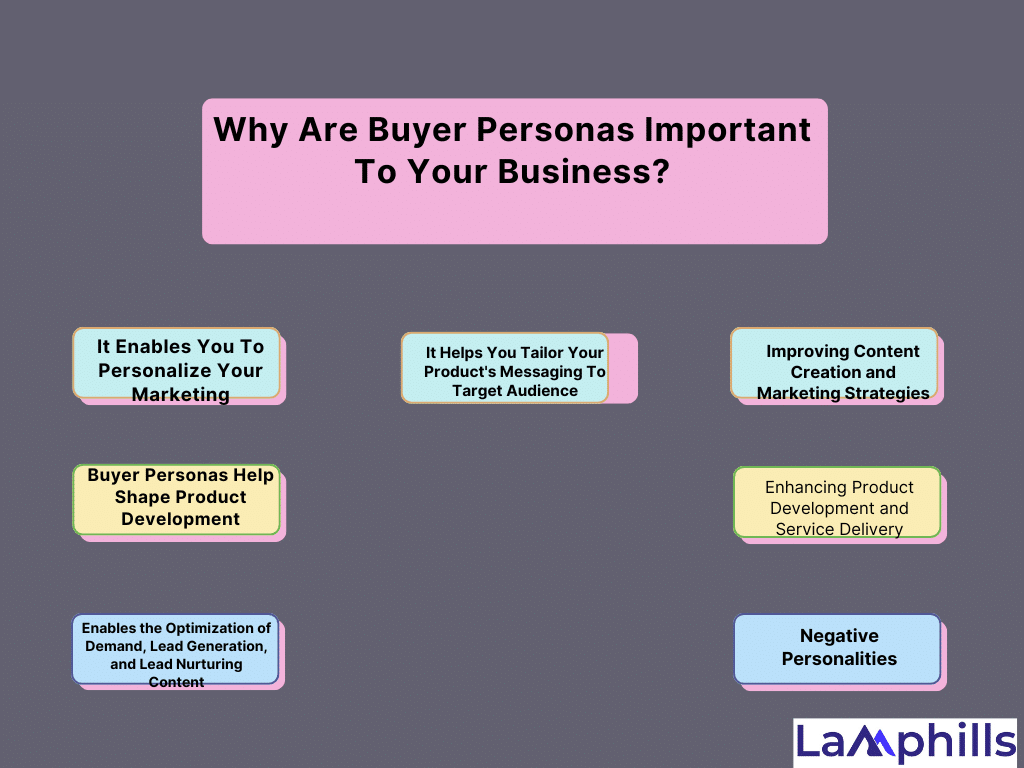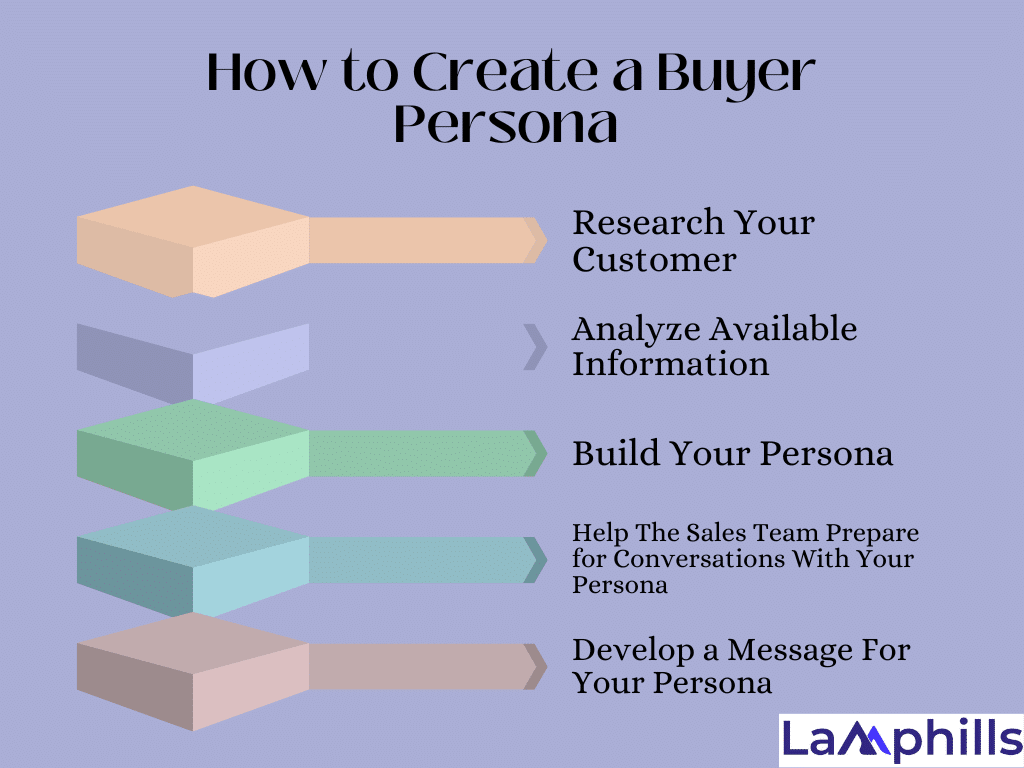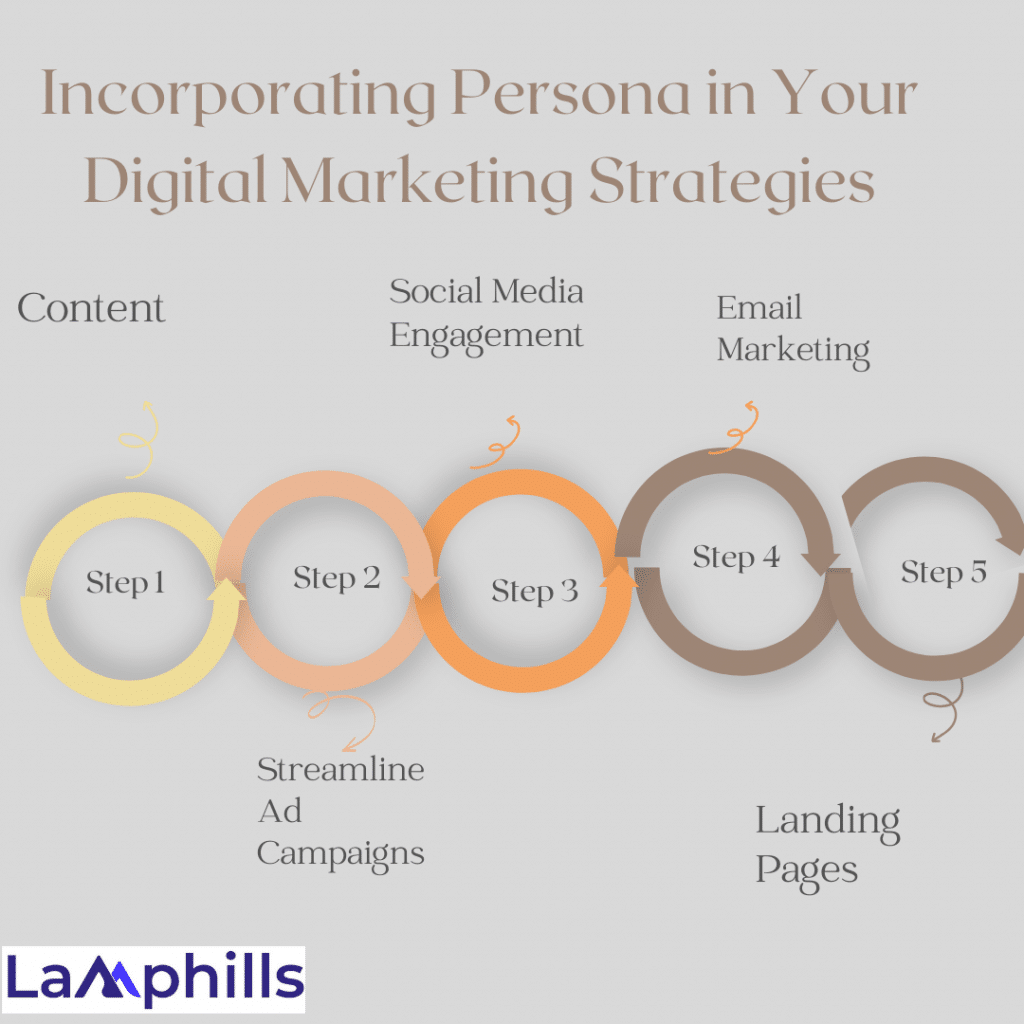Think about how much time you spend online. When was the last time you received an advertisement or recommendation that was off-topic? When was the last time you viewed content that was not targeted at your gender or age, but did fit at least some of your interests?
It’s been a while, Right?
However, the majority of such messages go unheard. Why? Because they are too general. Without a clear knowledge of who you’re communicating with, your marketing efforts frequently get lost in the air. This is where persona marketing steps in. Let me take you on a journey through this powerful strategy, and trust me, it’s one I’ve personally seen transform businesses.
Key Takeaways
- Understanding the daily experiences, challenges, and preferences of your target customers allows you to fine-tune product development.
- By identifying how customers prefer to engage with content, personas help optimize lead generation and nurturing strategies. Whether through SMS, email, or social media, businesses can ensure their content reaches customers in the format they prefer, boosting conversions.
- Defining “negative personas” (customers you don’t want) can help streamline your marketing efforts by preventing resources from being wasted on leads that are unlikely to convert. This fine-tuning helps target higher-value customers, improving marketing efficiency.
- Once buyer personas are established, they not only guide marketing but also enhance sales conversations and product messaging.
What Is a Persona in Marketing?

Persona marketing is the practice of developing detailed profiles (or personas) of your target customers using actual data and research. These personas direct everything, from how you compose your marketing message to how you create your product. Personas are fictitious characters that represent the characteristics, actions, and preferences of your ideal consumer. When done right, persona marketing helps businesses communicate in a way that feels personal and relevant.
In literary terms, a persona is a part that the author takes on to narrate their story in the first person. A marketing persona is a fictional figure produced by a marketer to represent a specific demographic within their target audience. What about creating a buyer persona in marketing? Yes, it is the same thing. This persona is who you’re selling to, thus they’re a possible buyer.
Marketing Persona Example
Let’s say you work for a toy company. This means your campaigns will target people who frequently buy toys for kids. This means you can create several customer personas that fit this description. Your potential customers can be full-time parents, grandparents, and other family members. Here’s an example persona for your campaign.
Name: Juliet
Age: 28
Occupation: Mother
Marital status: Married
Location: Maryland, USA
Kids: Seth (4) and Josiah (2)
Social media used: Twitter
Goals: To purchase books with educational value
Pain points: Excessive use of writing instead of pictures
Based on the above information, a marketing team could create a campaign that speaks to Juliet directly. For example, it might include an Instagram video ad that shows two young kids reading a book made from cartoon images. Now that you know what a marketing persona looks like, you can create one tailored to your specific audience. By using ideal customer personas, you can boost your marketing strategies and reach beyond your existing customers.
Why Are Buyer Personas Important To Your Business?

In a world where consumers expect personalization, persona marketing allows you to stand out by ensuring that your messaging is highly relevant. According to research, organizations that use persona-driven marketing techniques boost their qualified leads by 56%. The goal is not to reach more people, but to reach the right individuals. Before we begin the buyer persona-building process, let us first consider the influence of well-developed customer personas on your organization (particularly, your marketing activities).
#1. It Enables You To Personalize Your Marketing
Personalization is the primary reason why buyer personas are necessary, and it can only be achieved if you properly understand your audience. Customers value customization, as 96% of marketers say it enhances the likelihood of buyers becoming repeat customers and 94% say it boosts sales.
Those statistics reflect my consumer experience: I am more inclined to be a fan of and repeat business with brands who understand my preferences and cater to my interests. For example, receiving an email from a brand informing me that a product on my wish list is on sale is more likely to convert me into a devoted and thankful client.
#2. Buyer Personas Help Shape Product Development
Extensive study about your target customer assists you in the product development process. You will understand what your ideal customer goes through daily, which might lead to inventive product developments.
#3. Enables the Optimization of Demand, Lead Generation, and Lead Nurturing Content
Buyer persona research tells you how your ideal customer wants to hear from you, which can influence your demand generation strategies. For example, if your target audience prefers SMS communication, you might respond by creating SMS lead nurturing campaigns instead of emails.
#4. It Helps You Tailor Your Product’s Messaging To Target Audience
Completed buyer personas enable you to adjust your content, marketing, product development, and services to your target audience’s specific requirements, behaviors, and worries. This relates to the customization I discussed earlier: when you talk directly to your target audience, your marketing campaigns are more likely to be effective. Marketers who provide clients with a tailored experience are 215% more likely to believe their marketing techniques are effective than those who do not.
#5: Improving Content Creation and Marketing Strategies
Personas help you understand where your customers are, what they want, and how your solutions fit into their life. All of this knowledge will inform your content production and marketing efforts. You will no longer be shooting in the dark. Instead, every piece of content that leaves your desk will be for a person whose problem you are solving.
#6. Enhancing Product Development and Service Delivery
Beyond marketing, personalities have an impact on product development and service delivery. When you understand your target audience’s wants, you can adjust your products and services to meet their preferences, triggering a feedback loop that leads to long-term success.
#7: Negative Personalities
Knowing who you don’t want as a customer can help you focus your marketing efforts. Assume one of your business objectives is to attract and keep high-value clients. Perhaps you’d like to shift your primary client base from start-ups to mid-level agencies. You can change your marketing language from “We can help you get off the ground and scale up” to “We can help you streamline workflows to better save money.”
How to Create a Buyer Persona

High-quality buyer personas are built on actual information about your target audience’s interests, behavior, and demographics. So, the ideal way to construct buyer personas is to do research, surveys, and interviews with a diverse range of customers, prospects, and people outside of your contacts database who are similar to your target demographic. Now, let’s delve into the practical methods for creating effective personas.
#1: Research Your Customer
Your buyer persona begins with research. Without it, personas are merely assumptions. The information you hope to obtain from your investigation should include:
- Demographic info (age, gender, education, location, etc.), to get a foundational understanding of who your persona is.
- Behaviors (needs, purchasing behavior, brand loyalty, decision-making process), which lets you know how people behave as customers, what they respond to, and how they like to interact with preferred businesses.
- Psychographic information (lifestyle, values, interests), which gives you information about any factors influencing decisions, motivations, and behaviors.
- Goals and objectives, which tells you how your product or service relates to what they’re attempting to achieve.
- Pain points and challenges, which tell you the issues that your persona faces, how your product or service is a solution to their needs, and how to position it as that.
- Industry/professional information, like job title and responsibilities, tools used, industry, and company size, to get a sense of how you fit into their work day (if applicable).
You can separate your research process into two categories: your existing customers and everyone else. I do want to note that, when collecting demographic information, some people are more comfortable disclosing personal information privately, or some might not want to at all. I recommend making it optional unless it’s a pivotal part of your buyer persona.
Existing Customers
If you already have customers, they’re the best place to start. If you’re building your persona for a new business, you can scroll down to everyone else. You can conduct interviews (face-to-face or otherwise) and send out surveys to learn why they’re your customers. Responses will help you create value propositions and selling points for marketing materials that speak directly to your audience’s interests.
Your historical business data and analytics also offer a wealth of information about your current customers’ purchase history, touchpoints and interactions, preferred channels, etc. You can also:
- Check your website traffic analytics to identify useful information about your existing audience, such as demographics, which pages attract the most visitors and why, and what marketing campaigns drive the most traffic.
- Consider your sales team’s feedback on the leads they interact with most. What generalizations can you make about the different types of customers you serve best?
- Analyze customer feedback and support requests.
If you’re having direct conversations, I find it helpful to include descriptive buzzwords and mannerisms you pick up on. This can help your team identify certain personas when talking to prospects.
Everyone Else
Everyone else includes existing leads, prospects, people who have never heard of you, and even those who are negative buyer personas.
I recommend researching these groups second (unless you’re a new business) because you’ll already have a sense of what your ideal customer looks like from the information you’ve gathered about your existing customers. You’ll be more focused on who you talk to and where you look for people to talk to. Your research into everyone else can include the same things you employed for current customers, as well as:
- Focus groups.
- Look through your contacts database to uncover trends about how certain leads or customers find and consume your content.
- Social listening to see what people talk about online about what you offer, your competitors, and the industry as a whole.
- Customers who have churned and left feedback on their reasoning.
- Creating forms to use on your website to capture persona information (like company size)
Now, how do you use your completed research to create your persona? Analyze the information.
#2. Analyze Available Information
After you’ve completed the study, you’ll have enough raw data about your potential and existing clients. But what will you do with it? How can you distill everything so that everyone can understand what you’ve gathered?
Find patterns and commonalities in your research. Answers to interview questions, information entered into lead forms, and advice from the sales staff will all assist you in discovering how to be the most relevant to your persona and attract people in.
#3. Build Your Persona
This is where everything comes together. Once you’ve completed your research and segmentation, you’ll want to construct a detailed profile for each character. Give them a name, background, objectives, and challenges. The more human your personalities appear, the easier it is to connect with them.
For example, if you work in the travel industry, you can build a persona called “Adventure Andy,” a 28-year-old digital nomad who is always looking for new adventures. What are his goals? Discover cheap, off-the-beaten-path vacation adventures. What are his challenges? Balancing work and travel while remaining connected. Knowing this allows you to produce material, such as blog posts or email campaigns, that specifically addresses Andy’s desires and pain points.
#4. Help The Sales Team Prepare for Conversations With Your Persona
The personalities you construct might be much more effective if you add authentic statements from interviews that demonstrate what your audience is worried about, who they are, and what they want. This is when the buzzwords and mannerisms you saw during interviews can come in handy. You can also make a list of potential objections so that your sales team is prepared to answer them during meetings with prospects.
#5. Develop a Message For Your Persona
Tell them how to discuss your products/services using your character. This contains specific jargon and a broader elevator pitch that positions your answer in a way that is relevant to your persona. This will ensure that everyone in your firm speaks the same language when dealing with prospects and consumers. Finally, give your persona a name (e.g., Finance Manager Margie, IT Ian, or Landscaper Larry), so that everyone internally refers to each persona in the same way, providing for consistency across teams.
Incorporating Persona in Your Digital Marketing Strategies

believe you already have a marketing strategy in place, so I am not asking you to start again. However, if you are not already using consumer personas, we urge that you consider incorporating them into your current strategy. It is never too late to use personas in your marketing strategy. Once you’ve created your personas, here are some ways you may use them in your digital marketing strategies:
#1. Content
Each persona should receive a tailored message that addresses their specific wants and challenges. For example, if you’re selling to “Busy Brenda,” a parent juggling a job and a family, your pitch should emphasize how your product saves her time or makes her life easier.
To do this, customize your content to communicate directly to your characters. For example, if you are targeting “Tech-savvy Tina,” delivering technical information as a USP may be a method that piques her interest. On the other hand, “Earth-conscious Greg” would be most persuaded by the sustainable production processes you employ.
#2: Streamline Ad Campaigns
Customize your ad campaigns to reflect your personas’ tastes and pain areas. For example, promoting reductions may appeal to someone on a tight budget, but it may turn off “luxury-loving Tessy prefer,” who prefers premium service and exclusivity.
#3: Social Media Engagement
Change the tone and channel to target different personalities on social media. Divide your buyers into the channels they are most likely to utilize and engage them with content that could attract them. However, be aware of overlaps on social media channels and don’t present opposing arguments on social media, as that could dent your credibility.
#4. Email Marketing
Segment your email list by personas to send personalized content and offers. This guarantees that each subscriber receives information that meets their interests and demands.
#5: Landing Pages
Tight segmentation, such as email marketing and adverts, allows you to construct multiple – and more tailored – landing pages for purchasers that reflect different personas.
Segmented marketing frequently directs users to landing pages that leave them perplexed when they discover material geared toward a larger target group. Carry your segmentation to conversion with finely managed messaging on landing pages.
What are the 4 personas?
To sell your products or services successfully, you must understand the four types of buyer personas: competitive, spontaneous, humanistic, and methodical.
What is the personas technique?
The Persona Method is a technique used in the design of digital environments, product development, marketing, communication planning, and service design.
What is the purpose of a persona?
Creating personas will help you understand your users’ needs, experiences, behaviors and goals. How to Choose a Tool to Collect Marketing Persona Data? When choosing a tool, it is important to consider the following factors:
- The type of data you need to analyze
- The level of analysis you need to perform
- The features that are important to you
- Your budget
Conclusion
Persona marketing is more than just a buzzword; it’s a deliberate technique that can change how you interact with your target audience. Developing rich client profiles will result in increased engagement, conversions, and loyalty.
The process of developing and refining client personas is continual, but once you begin, you will never look at marketing the same way again. Given how much they influence practically everything else in your marketing function, it is critical to get them correct. So, take the time to do quantitative and qualitative research and create personas based on real customer insights; it will pay you in the long run.
If you’ve found this guide helpful, don’t stop here! Start crafting your customer personas, or reach out for a consultation to get hands-on help with your marketing strategy. Let’s bring your brand closer to the people that matter most!
References
Related Articles
- How to Create a B2B Buyer Persona: A Step-by-Step Guide for Marketers
- Ultimate Guide to Integrated Marketing Campaign + Famous Brand Examples.
- Social Media Manager Courses To Boost Your Digital Marketing Skills in 2024
- 15+ Public Relations Tools That Work: A Personal Guide to Enhancing Your PR Strategy






